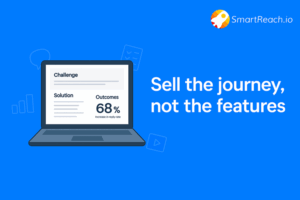What Is Social Proof & How Does It Build Trust?
You can tell people your product is great all you want, but that doesn’t mean they’ll believe you.
Trust online is fragile. Anyone can build a website, buy a domain, and write a tagline that sounds convincing. But real trust isn’t built with claims, it’s built with proof. People want evidence before they commit. They want signs that others have already trusted you, that your product works, and that your business does what it says it does.
That’s where social proof comes in. It taps into a fundamental principle of human behavior: when we’re uncertain, we look at what others are doing. We do it every day without thinking about it. We check restaurant reviews. We read Amazon comments. We don’t want to be the first person to take a chance. We look for proof first, then decide.
If your business doesn’t show social proof, you’re not giving people a reason to trust you. And if you’re not building trust, you’re losing conversions.
Why People Need Proof Before They Believe
Think about the last time you were unsure about buying something new. Maybe the product itself looked great, but the website felt a bit off. Or you found a few reviews, but there just wasn’t enough there to give you confidence.
That tiny seed of doubt? That’s exactly what social proof can help you erase.
A decision always feels easier when we see others have had a positive experience. A top rating, customer photo, or expert recommendation can all make a shopping decision feel less risky because you know someone else has taken the leap first and was happy with it.
That’s why a staggering 88% of consumers trust online reviews just as much as a personal recommendation. It proves a simple truth: what your customers say about you is infinitely more powerful than what you say about yourself.
How Social Proof Builds Trust
There’s always some risk involved when you’re shopping online. If people can’t hold the product or meet the people behind it, they rely harder on others’ experiences to fill that gap.
When they see genuine feedback, such as reviews or testimonials, the claims become evidence. And since the message comes from customers, not the seller, it carries more weight.
So don’t try too hard to impress your customers. You will get much better results by only reassuring them. That reassurance shortens sales cycles, lowers objections, and improves conversion rates across every channel, from social media and landing pages to cold emails and pricing pages.
For B2B sales teams, this principle is especially critical in cold outreach. When prospects see that other companies trust your platform, response rates improve noticeably.
Sales automation tools like SmartReach.io apply this by displaying customer testimonials and integration badges (Salesforce, HubSpot, Pipedrive) directly in their email sequences and landing pages. This approach reassures prospects that they’re not the first to take the leap, established businesses already rely on the tool for their outreach workflows.
Forms of Social Proof That Actually Work
Social proof doesn’t have to look the same for every business. The smartest brands use a mix of formats and place them at key decision points in the customer journey, not just on one testimonial page no one reads.
Reviews and Testimonials
A few honest words from a real customer can do more than paragraphs of marketing copy. The best testimonials are focused and specific: what problem did the person have, what changed, and what was the result?
Make leaving feedback easy for your customers. Automated review requests after purchase work well. So do in-app surveys. Small incentives like discounts can help too.
Then, use those reviews strategically. Don’t bury them on a “Testimonials” page. Place them right where decisions happen: next to CTAs, on pricing tables, or in product comparisons.
B2B SAAS platforms take this further by embedding customer success metrics directly on feature pages. For instance, SmartReach displays quantified results like “Increased reply rates by 40%” and “3x more meetings booked” on their pricing and product pages, not hidden in a separate case study library. When prospects see these specific, measurable outcomes from similar companies during their evaluation, the proof becomes impossible to ignore and far more persuasive than generic claims.
A stable 4.5-star rating backed up by many can help you build more confidence in your customers than a perfect five from just 10 people. A few neutral comments make the whole picture believable.
Credibility Through Expertise
People often need a voice of authority to feel safe making a purchase. That’s where expert endorsements or third-party validation come in.
Performance Lab, a clean-label supplement brand, uses this extremely well. Instead of influencer hype, they feature professionals, a cardiovascular nurse, a chemical engineer, a holistic nutritionist who share actual reasons they use the product. Their message is supported with third-party testing and B Corp certification.
There’s no pressure, just proof backed by credibility. That’s what works in industries like health, finance, or technology, people want risk-free guidance.
Authority isn’t about big names. It’s about relevant voices that your target audience respects.
Visual and Cultural Proof
Not every audience cares about data or science. Some people seek recognition, craftsmanship, or a sense of belonging.
IceCartel, a moissanite jewelry brand, builds trust visually. Instead of lengthy testimonials, it shows GIA and GRA certifications alongside bold product imagery and photos of celebrities wearing its designs. The proof is in what you can see: certified materials, flawless detail, and cultural recognition.
For lifestyle and luxury brands, that’s the social proof that counts the most. It connects identity, trust, and aspiration in one glance.
Everyday Validation from Real Customers
User-generated content, such as photos, posts, and tags from actual customers, feels real because it is. It’s spontaneous and relatable. The fact that it doesn’t always look polished? That’s exactly why it works.
Encourage customers to share their experiences publicly. Social sharing prompts after checkout help. So do branded hashtags. Spotlight customer photos in your emails and social feeds. Small moves like these build community and add authenticity you can’t fake.
B2B SAAS companies can automate this collection process to scale their social proof. Tools like SmartReach send automated follow-up sequences requesting LinkedIn recommendations or G2 reviews 30 days post-signup, precisely when customers have enough experience to advocate but haven’t yet churned. This systematic approach turns satisfied users into ongoing social proof generators without manual outreach from your team.
Don’t overlook the subtle stuff either. SSL badges, verified payment icons, trust seals, they matter during those final moments before someone checks out. They’re not flashy, but they quietly signal: you’re safe here.
Putting Social Proof to Work
Most businesses treat social proof like decoration, a nice thing to throw on a page. But it performs best when it’s used strategically across the funnel.
The question isn’t “Do we have social proof?” It’s “Are we showing the right proof at the right moment?”
For B2B SAAS tools, the consideration stage is particularly crucial. When prospects evaluate whether your platform fits their tech stack, showing integration badges (like SmartReach’s Salesforce, HubSpot, and Pipedrive certifications) directly on feature comparison pages reduces implementation anxiety, a common deal-breaker in enterprise sales cycles.
Pro tip: Keep your social proof up to date. Outdated reviews and old partnerships can backfire, signaling that your brand has gone quiet. Refresh your proof regularly (ideally quarterly) and repurpose it across various platforms. For B2B SAAS brands, this might mean updating user count metrics (e.g., “15,000+ users in 2025” vs. “10,000+ in 2024”) or adding new integration badges as partnerships expand. A great testimonial can easily transform into a case study, social post, or ad headline.
How to Use Social Proof Without Overdoing It
Social proof only works when it feels genuine. If you cram a page with badges, reviews, and logos, it starts to look like you’re trying too hard. People pick up on that quickly.
So, instead of dumping everything in one section, weave trust signals naturally into your pages. For example, you can add a short testimonial next to a CTA or place a certification badge near your checkout button.
Make trust a part of the user experience, not a performance.
Common mistakes to avoid
Bad social proof is worse than no social proof. Watch out for:
- Fake or anonymous reviews
- Outdated testimonials
- Generic praise like “Great service!”
- Overloading pages with too much proof
- Copy-pasting the same testimonial everywhere
- Ignoring negative reviews instead of addressing them
Social proof only works when it feels honest.
Building It over Time
Your audience doesn’t want perfection. They want proof.
Social proof is more than a marketing tactic, it’s a trust system. It takes your brand out of the “we’re saying it” zone and into the “here’s evidence” zone. And that’s where people start feeling safe enough to buy.
Use it early, use it often, and make sure it matches what your buyers actually care about. When they see that others already trust you, they won’t feel like they’re taking a chance but making a smart decision.
Because marketing doesn’t need to convince anyone. It needs to confirm what they already hope is true: that your product is worth it.



